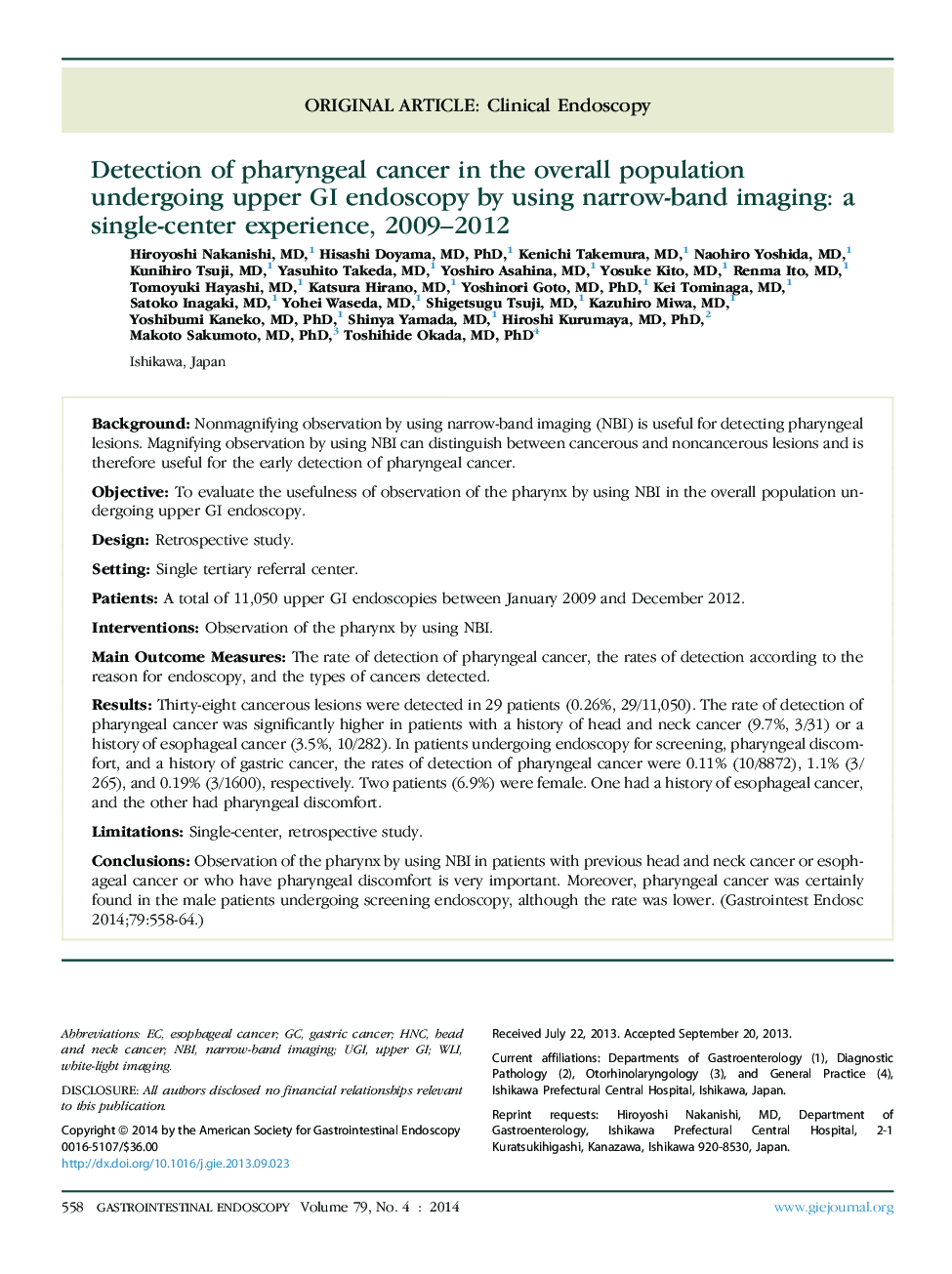| Article ID | Journal | Published Year | Pages | File Type |
|---|---|---|---|---|
| 3303256 | Gastrointestinal Endoscopy | 2014 | 7 Pages |
BackgroundNonmagnifying observation by using narrow-band imaging (NBI) is useful for detecting pharyngeal lesions. Magnifying observation by using NBI can distinguish between cancerous and noncancerous lesions and is therefore useful for the early detection of pharyngeal cancer.ObjectiveTo evaluate the usefulness of observation of the pharynx by using NBI in the overall population undergoing upper GI endoscopy.DesignRetrospective study.SettingSingle tertiary referral center.PatientsA total of 11,050 upper GI endoscopies between January 2009 and December 2012.InterventionsObservation of the pharynx by using NBI.Main Outcome MeasuresThe rate of detection of pharyngeal cancer, the rates of detection according to the reason for endoscopy, and the types of cancers detected.ResultsThirty-eight cancerous lesions were detected in 29 patients (0.26%, 29/11,050). The rate of detection of pharyngeal cancer was significantly higher in patients with a history of head and neck cancer (9.7%, 3/31) or a history of esophageal cancer (3.5%, 10/282). In patients undergoing endoscopy for screening, pharyngeal discomfort, and a history of gastric cancer, the rates of detection of pharyngeal cancer were 0.11% (10/8872), 1.1% (3/265), and 0.19% (3/1600), respectively. Two patients (6.9%) were female. One had a history of esophageal cancer, and the other had pharyngeal discomfort.LimitationsSingle-center, retrospective study.ConclusionsObservation of the pharynx by using NBI in patients with previous head and neck cancer or esophageal cancer or who have pharyngeal discomfort is very important. Moreover, pharyngeal cancer was certainly found in the male patients undergoing screening endoscopy, although the rate was lower.
